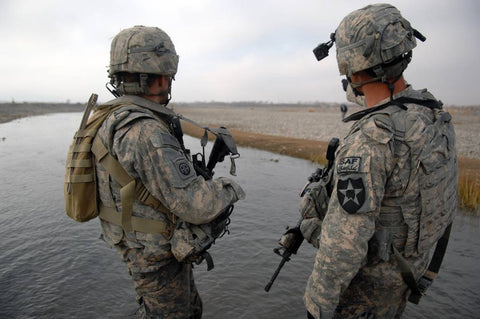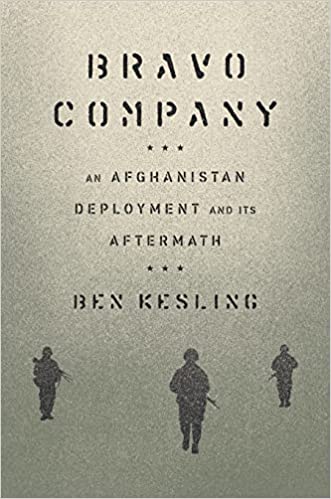
New Book ‘Bravo Company’ is Definitive Look at Afghanistan IED War
In the years since the U.S. war in Afghanistan began in October 2001, a number of defining books and movies have helped the American public understand how its troops lived, fought and sometimes died there.
Sebastian Junger’s documentary Restrepo and his accompanying works like “War” and “Korengal” helped audiences understand the brutal reality of fighting in the country’s rugged mountainous northeast, and Wes Morgan’s The Hardest Place placed that struggle into the broader context of the political- military establishment’s strategic failures in the country.
One veteran I know served in the Korengal with Battle Company of the 173rd Airborne Brigade’s 2-503rd Infantry, earning a valor award for his actions there. When we chatted about the way his slice of the Afghanistan War was portrayed in books and on screen, he reminded me that other units across the country had very different fights — they just didn’t have their Junger or Morgan to immortalize it yet.
But author Ben Kesling, a former Marine infantry officer and reporter at the Wall Street Journal, has written what may be the defining book about a very different version of the war in southern Afghanistan: the arid-yet-lush, improvised explosive device-scattered Arghandab Valley in Kandahar Province.
Kesling’s new book, “Bravo Company: An Afghanistan Deployment And Its Aftermath,” follows the paratroopers of Bravo Company of the 82nd Airborne Division’s 2-508th Infantry from their pre-deployment training — when they thought they’d be heading to Iraq — through the twists and turns of a 2008-2009 Afghanistan deployment that saw three Bravo soldiers killed and and nearly half of the company decorated with the Purple Heart for combat wounds. And most of the killed and wounded fell victim to IEDs, with little warning or opportunity to fight the Taliban face-to-face.

Bravo Company: An Afghanistan Deployment And Its Aftermath
by Ben Kesling, Harry N. Abrams, November 1, 2022
If you buy something through our site, we might earn a commission.
Soldiers waded through filthy canals and streams as much as possible for their daily patrols, since they figured not even the Taliban could plant bombs there. One NCO recalled wading several miles in his dress uniform to the battalion command post to appear before the sergeant major for a promotion board. When the soldier and his comrades showed up, their uniforms ruined, the CSM abruptly cancelled the board interviews to go on a battlefield circulation trip.
Soldiers from Charlie Company, 1st Battalion, 17th
Infantry Regiment, 5th Brigade, 2nd Infantry Division ford a stream during a
security patrol in the Arghandab Valley, Afghanistan, Dec. 3, 2009. (Tech.
Sgt. Francisco V. Govea II/Air Force)
The author masterfully captures the dark humor that troops used to cope with their real anxieties through writing that simultaneously captures the infantryman’s spirit (and profanity) in a way any reader can understand. First troops would joke that they didn’t want to be saved if they lost a leg, but as more and more of them lost limbs, the joke evolved to if they lost two legs. But as the number of double amputees mounted, the sacred body parts that young paratroopers (whose units did not yet have women) didn’t want to lose moved a little bit north.
“[A]fter a while two legs gone didn’t seem so bad. So they’d say, ‘Man, if I get blown up and lose my dick, don’t even try and save me,’” explained Kesling. “That one never changed. The dick is a sacred piece of Army gear that no soldier can imagine losing. Even the balls are somewhat expendable.”
Eventually many soldiers refused to patrol as casualties mounted. On the other side of the valley, the battalion’s Charlie Company saw a similar phenomenon unfold, though they at least got to see the Taliban (and shoot them) sometimes.
But Bravo Company goes further than telling the story of the company’s Arghandab war. Kesling also follows the men of Bravo home, where the Department of Veterans Affairs identified its solders as being at “extraordinary risk” of mental health struggles due to the nature of the combat they saw and the high rate of both visible — and invisible — wounds.
The book tells the story of how one soldier who lost his foot — Steve Towery — struggled with whether he was truly a combat veteran or not. He’d lost his foot to an IED on the first day Bravo took casualties, ending his war earlier than that of his colleagues. He would tell his young children that a shark had eaten it, or that he’d lost a knife fight in Mexico.
Another soldier, Staff Sgt. Allen Thomas, had been wounded by a suicide bomber and medically retired. He never fully recovered, eventually killing two neighbors and himself in a 2013 murder-suicide in Fayetteville, North Carolina. Then another Bravo vet, Derek Hill, died by suicide in 2018.
That led the VA to partner with a non-profit and take an innovative approach to community support for Bravo Company vets: a pilot public-private partnership brought 98 of them together in Charlotte, North Carolina, in 2019, connecting them to one another and resources that can change their lives. And since that transformative reunion, no Bravo vets have died by suicide.
Throughout the book, Kesling’s own saltiness and cynicism shines through at times, offering an authentic edge to his work.
That’s what makes his telling of Bravo Company’s redemptive reunion compelling — leaving readers hopeful of the lessons it offers for those who may still be struggling and disconnected during the war that follows redeployment.
“Bravo Company: An Afghanistan Deployment And Its Aftermath” by Ben Kesling released Nov. 1 and is available for purchase at local bookstores and retailers around the country.
Originally published by Military Times, our sister publication.
